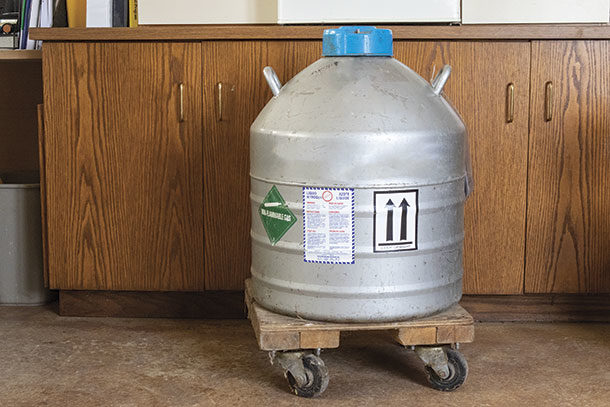Reproductive performance continues to improve across the dairy industry. Herds routinely achieve 21-day pregnancy rates above 20%, up from 14% reported as the national average in the 1990s. Many herds routinely achieve 21-day pregnancy rates of 30% and higher.
This benchmark means there’s plenty of opportunity to increase your herd’s reproduction, especially if you’re shooting for the 30% pregnancy rate target.
Data from herd activity monitoring systems can provide you crucial information to help improve reproductive metrics while improving your dairy’s ability to manage by exception. This strategy targets cows requiring attention, leaving the rest of the herd to maintain its consistent routine while your dairy seeks to excel in pregnancy creation.
Here’s what you need to know about putting automated monitoring information to work for your reproduction program.
Dollars and cents
Why does this performance parameter matter so much? It’s all about profitability.
According to research from the University of Wisconsin, the economic gain of increasing a herd’s 21-day pregnancy rate from 15% to 20% is $50 per cow per year.
Even though returns slow down the more success you achieve, increasing your herd’s pregnancy rate from 30% to 35% still nets $21 per cow per year. Further, the value of a pregnancy (at diagnosis time) is always positive and varies between $128 and $232 for a cow of average productivity.
Looking at reproductive costs on an even closer level, if an open day costs your farm $2, a missed heat equals $42. Consider the implication if multiple heats are missed. When you multiply these figures across 1,000 cows, it’s easy to see why improving reproductive performance remains a key factor for dairies.
Technology can help
Improved heat detection is often the key to improving overall reproductive performance. That’s because heat detection efficiency (defined as the proportion of possible heat periods detected over a period of time) is less than 50% in many herds.
Automated monitoring systems are proficient at identifying cows in estrus – and can do so more accurately than people. Because these systems never require sleep, take breaks or have other tasks to do, this technology can efficiently monitor cows 24-7.
Beyond signs the human eye can watch for, like mounting, automated systems also monitor cow activity and more subtle changes in estrus behavior and correlate them to normal cow patterns. These changes often go unnoticed by people or tail-chalking programs.
The data collected by these systems help amp up your reproduction program in two ways:
- Find more cows in estrus
- Find cows not showing estrus
As a result of fine-tuning reproduction programs with automated activity monitoring, herds have been able to take their 21-day pregnancy rate upward of 30%.
Find cows in heat
The window to catch cows showing visible signs of estrus is a moving target.
First, not all cows abide by a 21-day cycle. Cycles typically fall within a range of 18 to 24 days. Additionally, the average standing heat lasts 15 to 18 hours but may be as short as four hours.
Plus, it’s easy to miss mounting activity with visual heat observation. Cows average about 1.5 mounts an hour, and mounting activities last for about four to six seconds. Cows are less likely to exhibit signs of estrus during milking and feeding times and more likely to show estrus when they are not distracted.
If your team is not present when these signs appear, it’s easy to miss a cow in heat.
Automated activity monitoring systems overcome these limitations, making heat detection their full-time job. And resulting data can provide actionable insights as to the best time to inseminate cows based on the totality of estrus indicators.
Find cows not showing heat
Another group benefits from automated systems – cows not showing signs of estrus.
This lack may be due to physical challenges like poor floor surfaces, lameness, heat stress or health concerns. Or the cow could be anovular.
Data analysis can help you sort out estrus inactivity causes, enabling your team to identify target cows and perform timely interventions to correct issues. Farms can tap into three benefits with this information.
- Identify and correct physical challenges limiting herd performance.
- Find anovular cows and put them into a synch protocol to help reverse this condition. This strategy empowers your team to use synch protocols as a prescriptive solution, rather than a one-size-fits-all program. At first insemination, 23% of dairy cows are anovular, on average. Even at later breedings, more than a quarter of the cows open and eligible for breeding aren’t ovulating normally.
- Find cows that are ovulating but don’t show visible signs of heat for breeding.
Data from a large U.S. dairy farm showed that an activity monitoring system with automated heat detection revealed increased activity in about 70% of lactating cows. Of those, 20% were anovular and 10% were ovulating without showing signs of estrus. The researchers concluded that synch protocols were useful to inseminate cows not detected with increased activity by the automated system.
Efficiently finding open cows because you are monitoring cows 24-7 saves the cost of open days and enables your team to function more effectively and efficiently. Data helps redefine the way your employees do their jobs and how work gets done on your dairy.
Find the truth
Data are great and data are valuable. But data without actionable steps or reliable, accurate animal identification is of no value.
When these considerations are paired correctly, automated activity monitoring data helps dairies rewrite essential management procedures to the benefit of animals and people. More importantly, the data generated by these systems offer insights straight from the source – the cow itself.
This shift means the cow is now the source of truth and can tell us what's going on with her reproductive status. That can make all the difference between increased profitability and mediocre performance.







